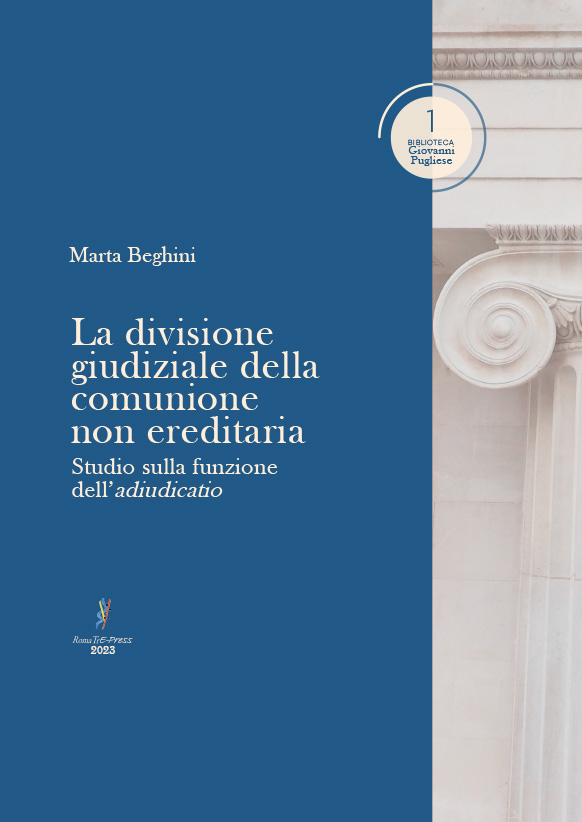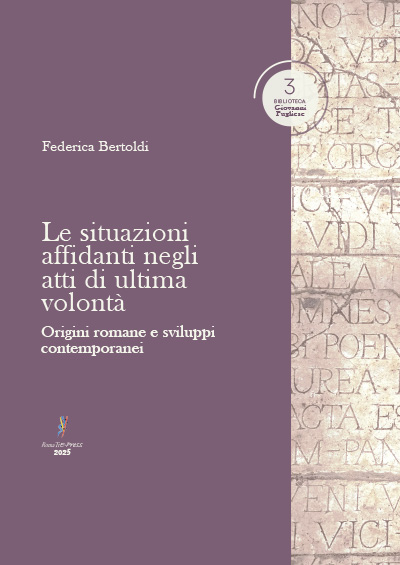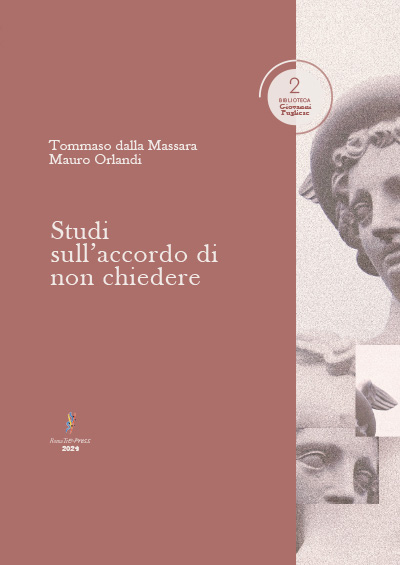Abstract

In questo studio, l’autrice analizza il funzionamento del giudizio di scioglimento della comunione non ereditaria nell’ambito del processo privato romano di età classica, dunque con riferimento al tipo di procedura cd. formulare, allo scopo di chiarire l’efficacia della pronuncia di divisione. Nell’ambito del titolo dei Digesta 10.3, dedicato al iudicium communi dividundo, la fattispecie divisoria è considerata dalla prospettiva della funzione svolta dall’adiudicatio, ora come parte formulare, ora come pronuncia dell’organo giudicante. Più in dettaglio, la funzione dell’aggiudicazione nell’ambito della divisione giudiziale è approfondita alla luce della tradizionale lettura in termini meramente costitutivi. Nella riflessione della giurisprudenza romana, l’adiudicatio ricopre, a ben vedere, una funzione eclettica e regolativa degli interessi patrimoniali dei soggetti coinvolti nel giudizio. Precisamente, il contenuto della pronuncia divisoria è individuato avuto riguardo alle caratteristiche della res, per un verso, e alla voluntas dei litiganti, per altro.

In this study, the author analyses the functioning of the judgement of termination of non-inherited communion in the context of the Roman private trial of the classical era, thus with reference to the so-called formular type of procedure, in order to clarify the efficacy of the pronouncement of division. Under the title of the Digesta 10.3, dedicated to the iudicium communi dividundo, the case of division is considered from the perspective of the function performed by the adiudicatio, now as a formular part, now as a pronouncement of the judging body. More specifically, the function of adiudicatio in the context of judicial division is examined in the light of the traditional reading in merely constitutive terms. In the reflection of Roman jurisprudence, the adiudicatio covers, on closer inspection, an eclectic and regulative function of the patrimonial interests of the parties involved in the judgement. Precisely, the content of the divisional pronouncement is identified with regard to the characteristics of the res, on the one hand, and the voluntas of the litigants, on the other.




